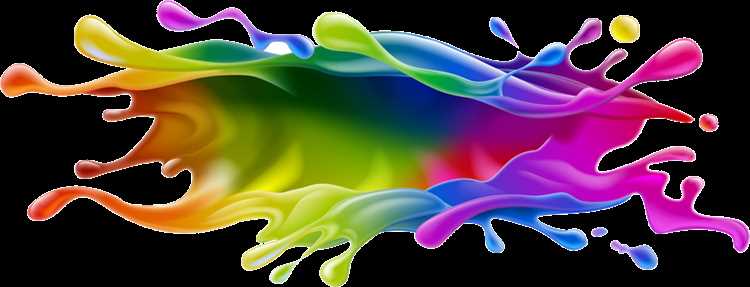Transparent is not a color by definition. It is the quality or property of being able to see through an object or substance. When we say something is transparent, it means that light can pass through it without being scattered or reflected in such a way that it distorts the view on the other side.
Transparent objects appear clear or see-through because they do not absorb or reflect any visible light. Instead, they allow light to pass through them almost like there is nothing there. The absence of color in a transparent object gives the impression that it is colorless or invisible.
However, it is important to note that transparency does not equate to invisibility. While transparent objects do not block the view of what is behind them, they can still be detected due to the refraction or bending of light that occurs when it passes through them.
Transparent materials such as glass, plastic, or water allow light to pass through them because they have a specific molecular structure that enables the photons of light to travel through without being absorbed or reflected. This molecular arrangement allows for the transmission of light and gives the illusion of transparency.
The Nature of Transparent Color
Transparent color is a unique phenomenon that allows light to pass through it, making it appear invisible or see-through. Unlike opaque colors, which block light and do not allow it to pass through, transparent colors have a translucent quality.
Transparent colors are often associated with materials such as glass, water, and air. When light interacts with these materials, it is able to pass through them due to their molecular structure.
One common misconception about transparent color is that it does not have a color of its own. However, this is not entirely true. Transparent color can have a hue, but it is typically very faint or diluted. The true color of a transparent object is often revealed when it is placed against a contrasting background.
Transparent color can also be used in artwork and design to create subtle and delicate effects. It allows for layering and blending of colors, creating a sense of depth and complexity. Transparent pigments are often used in watercolor painting, where they can be applied in thin washes to achieve luminosity and transparency.
When working with transparent color, it is important to consider the underlying surface or material. Transparent color can interact differently with various surfaces, causing it to appear darker or lighter. It can also be influenced by the presence of other colors, creating new and unexpected shades.
In conclusion, transparent color is a fascinating and versatile aspect of the color spectrum. It defies the conventional notion of color by allowing light to pass through it, creating a sense of transparency and luminosity. Whether in nature or art, transparent color adds a unique and ethereal quality to our visual experiences.
The Science Behind Transparency
Transparency is the property of allowing light to pass through an object without significant scattering. It is a common trait in various materials and has a significant impact on our daily lives. Understanding the science behind transparency can help shed light on how different objects and substances can appear to be transparent.
Transparency is determined by the molecular structure of a material. In transparent materials, such as glass, the molecules are organized in a way that allows light to pass through without being absorbed or reflected. Instead, the molecules vibrate and re-emit the light in the same direction, preserving its original path. This coherent re-emission of light contributes to the transparency of the material.
Another key factor in transparency is the refractive index. The refractive index is a measure of how much a material bends or slows down light as it passes through. Materials with a high refractive index, like glass, tend to have a higher level of transparency because they minimize light scattering and allow for better light transmission.
Transparency can also be influenced by impurities or defects in the material. Even a small amount of impurities can disrupt the regular molecular structure and affect the transparency of a substance. For example, adding coloring agents to glass can alter its transparency, as the added molecules interact with light in different ways.
Additionally, the thickness of a material can impact its transparency. Thin materials, like a sheet of glass, appear more transparent than thick materials due to the reduced number of molecular interactions that can scatter or reflect light. This is why a window pane looks clear, while a block of glass may appear more opaque.
Overall, transparency is a complex phenomenon that involves the molecular structure, refractive index, impurities, and thickness of a material. By understanding these factors, scientists and engineers can develop new materials with specific transparent properties, leading to advancements in technology, optics, and various industries.
Understanding the Invisible Spectrum
The concept of color is fundamental to our perception of the world around us. We are accustomed to associating colors with various objects and phenomena. However, there exists a whole realm of color that is invisible to the naked human eye. This invisible spectrum is known as the electromagnetic spectrum.
The electromagnetic spectrum is a range of electromagnetic radiation that encompasses all possible wavelengths and frequencies, from the longest radio waves to the shortest gamma rays. The visible light spectrum, which we can detect with our eyes, is just a small portion of this vast spectrum.
One of the most fascinating parts of the electromagnetic spectrum is the ultraviolet (UV) region. UV light has shorter wavelengths than visible light and is invisible to humans. Despite being invisible, UV light plays a crucial role in various biological and physical processes.
UV light is responsible for causing sunburn and skin damage, making it important to wear sunscreen when exposed to sunlight. It is also widely used in forensics to detect blood, fingerprints, and other substances. In addition, UV light is essential for organisms that use it to find food or attract mates, such as bees that detect UV patterns on flowers.
Another significant part of the invisible spectrum is infrared (IR) light. This type of radiation has longer wavelengths than visible light and is also invisible to humans. Infrared radiation is widely used in thermal imaging, night vision devices, and remote temperature sensing. It is also utilized in communication systems, such as TV remote controls and wireless data transfer.
Understanding the invisible spectrum allows scientists and researchers to explore and study phenomena that would otherwise be hidden from view. It opens up new opportunities in fields like astronomy, where scientists use various telescopes and sensors to observe and analyze different parts of the electromagnetic spectrum.
In conclusion, color goes beyond what our eyes can see. The invisible spectrum, consisting of ultraviolet and infrared light, plays a crucial role in our world. By understanding and harnessing the power of these invisible colors, we can unlock new insights and advancements in various scientific disciplines.
Common Examples of Transparent Colors
Transparent colors are colors that you can see through or colors that allow light to pass through them. They are often used in various applications, such as design, art, and technology. Here are some common examples of transparent colors:
1. Clear
The color clear is often associated with transparency. It is a colorless color that allows light to pass through without any obstruction. Clear colors are commonly used in products such as glass, plastic, and water.
2. Light Blue
Light blue is a color that is often perceived as transparent due to its cool and calming nature. It can be found in natural elements such as the sky and water, as well as in various design elements such as glassware and packaging materials.
3. Pale Pink
Pale pink is a soft and delicate color that can create a transparent effect when used in the right context. It is often associated with femininity and is used in applications such as fashion, interior design, and graphic design.
4. Mint Green
Mint green is a light and refreshing color that can give off a transparent impression. It is commonly used in design and fashion industries to create a sense of vibrancy and freshness.
5. Aquamarine
Aquamarine is a transparent blue-green color that is reminiscent of the ocean or tropical waters. It is often used in jewelry, interior design, and fashion to evoke a sense of calmness and beauty.
6. Champagne
Champagne is a warm and golden color that can create a transparent effect when used in certain applications. It is often seen in artwork, fashion, and luxury products to convey elegance and sophistication.
7. Smoky Gray
Smoky gray is a dark and hazy color that can create a transparent or translucent appearance. It is often used in architecture, interior design, and fashion to add depth and mystery to a design.
8. Crystal Clear
Crystal clear, as the name suggests, is a color that resembles a transparent crystal. It is often used in jewelry, decor, and design to create a sparkling and transparent effect.
9. Ice Blue
Ice blue is a pale and cool color that can give off a transparent or icy appearance. It is commonly used in winter-themed designs, beauty products, and fashion to create a fresh and ethereal look.
10. Translucent White
Translucent white is a color that appears to be transparent or semi-transparent. It is often used in design and fashion to create a soft and delicate look, resembling materials such as frosted glass or sheer fabrics.
These are just a few examples of transparent colors that are commonly used in various industries. The use of transparent colors adds a unique and visually appealing element to designs, making them versatile and captivating.
Factors Affecting Transparency
Transparency is the property of objects or substances that allows light or other electromagnetic waves to pass through them. While the concept of transparency may seem simple, several factors can influence the level of transparency of an object or substance.
- Chemical Composition: The chemical composition of an object or substance plays a significant role in determining its transparency. Certain materials, such as glass, are naturally transparent due to their atomic structure, while others may be transparent only under specific conditions.
- Physical Structure: The physical structure of an object can affect its transparency. For example, a glass window with a smooth surface allows light to pass through more easily than a frosted glass window with a rough surface. Similarly, a crystal with a regular lattice structure may be more transparent than a crystal with defects or impurities.
- Thickness: The thickness of an object or substance can impact its transparency. In general, thinner materials tend to be more transparent than thicker ones. As light passes through a transparent medium, it may be scattered or absorbed. Thicker materials have a higher chance of scattering or absorbing more light, reducing their transparency.
- Purity: The purity of a substance can affect its transparency. Impurities or foreign particles within a transparent material can cause light to scatter, reducing its transparency. For example, a pure diamond has higher transparency compared to a diamond with impurities or inclusions.
- Wavelength of Light: The wavelength of light also affects transparency. Different materials may exhibit different levels of transparency to different wavelengths of light. For example, a material that is transparent to visible light may be opaque to ultraviolet or infrared light.
Understanding the factors that influence transparency is crucial for various applications and industries. By manipulating these factors, scientists and engineers can develop new materials with desired levels of transparency, leading to advancements in fields such as optics, electronics, and renewable energy.
Applications of Transparent Color
Transparent colors have a wide range of applications across various industries. Here are some common uses of transparent color:
-
Graphic Design: Transparent colors are frequently used in graphic design to create overlays and blend multiple images together. They add depth and complexity to designs, allowing for creative effects and visual appeal.
-
Architecture: Transparent colors play a crucial role in architectural design, particularly for windows and glass elements. Transparent glass allows natural light to enter a building while providing visibility to the outside world.
-
Automotive Industry: Transparent colors are used in the production of windshields, windows, and car lights. These colors provide visibility while ensuring the safety of drivers and passengers.
-
Decorative Arts: Transparent colors are often used in the creation of stained glass windows, decorative vases, and glass sculptures. These colors enhance the beauty and artistic value of such pieces.
-
Photography and Film: Transparent colors are used in photography filters and film production to manipulate light and create desired effects. They can be used to enhance colors, add a vintage look, or create a sense of nostalgia.
In addition to these applications, transparent colors are used in various other industries such as fashion, packaging, and electronics. Their versatility and ability to add depth and visual interest make them an essential element in many creative and functional projects.
The Future of Transparent Color
Transparent color plays an important role in various industries, such as design, technology, and fashion. It is a color that allows light to pass through, making it appear see-through or translucent. Traditionally, transparent color has been associated with the colorless or neutral hues, such as clear or white. However, the future of transparent color holds exciting possibilities for innovation and creativity.
With advancements in technology, transparent color can now be achieved with a wide range of hues. New materials and dyes have been developed that allow for the creation of transparent colors in different shades, from vibrant reds and blues to delicate pastels. This opens up endless opportunities for artists, designers, and manufacturers to explore the use of transparent color in their creations.
One area in which transparent color is making a significant impact is in the world of fashion. Designers are experimenting with transparent fabrics and materials to create innovative and futuristic designs. Transparent color adds a sense of ethereal beauty to garments, allowing wearers to subtly show off their skin or layers underneath. It is also being used to create futuristic accessories, such as transparent handbags and shoes, which add a modern and avant-garde touch to any outfit.
In the field of architecture and design, transparent color is being used to create stunning and visually striking structures. The combination of transparent materials, such as glass or acrylic, with vibrant transparent colors gives buildings and structures a unique and futuristic appearance. Transparent color can be used to create stunning facades, windows, or interior elements that allow natural light to flood the space, creating a sense of openness and connection with the surroundings.
Transparent color is also playing a crucial role in technology and digital innovation. Transparent displays and screens are being developed, allowing for exciting applications in various industries. These transparent screens can be used in retail to create interactive and immersive experiences, in automotive design to enhance safety and visibility, and in healthcare to improve medical imaging and diagnostics.
In conclusion, the future of transparent color holds immense potential for innovation and creativity. With advancements in technology and materials, transparent color can now be achieved in a wide range of hues, opening up new possibilities in fashion, design, architecture, and technology. From futuristic fashion designs to transparent buildings and high-tech displays, transparent color continues to shape and inspire the world around us.
FAQ:
What is the color of transparent objects?
The color of transparent objects is usually clear or colorless.
Why are transparent objects transparent?
Transparent objects are transparent because they allow light to pass through them without scattering or reflecting it, which makes them appear clear or colorless.
What is the scientific explanation for transparency?
The scientific explanation for transparency is that transparent materials have a specific atomic or molecular structure that allows light to pass through them with minimal interaction, resulting in the appearance of transparency.
Can transparent objects have a color?
Transparent objects can appear to have a color if they selectively absorb or transmit certain wavelengths of light. For example, a piece of red glass may appear transparent but will only transmit red light while absorbing other colors.
Are there any transparent objects with a natural color?
Yes, there are transparent objects with a natural color. Examples include certain gemstones like emeralds or sapphires, which have a natural green or blue color while still allowing light to pass through them.


